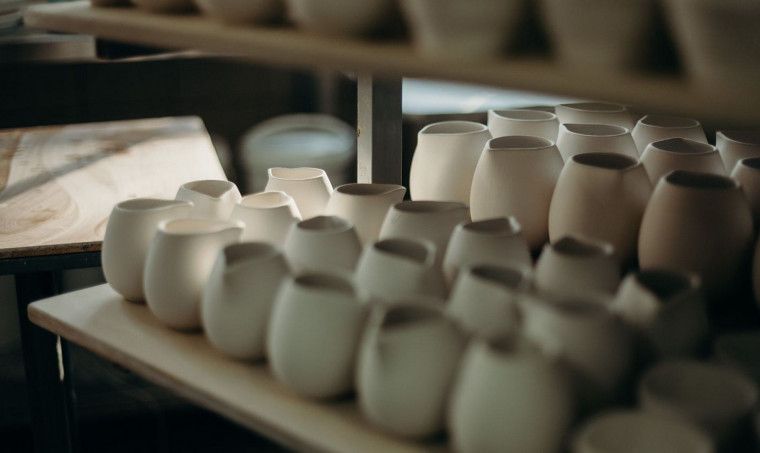What Is Porcelain Insulator?
What Are Porcelain Insulators?
Porcelain insulators are ceramic insulators made from porcelain. They are commonly used to mechanically support and electrically insulate high-voltage power lines and equipment. Porcelain insulators are made from clay, quartz or alumina and feldspar, and are covered with a smooth glaze to shed water. The glaze protects the porcelain body from moisture penetration which could decrease the insulator’s insulating property (Wikipedia, 2022).
Porcelain insulators are known for their high mechanical strength, hardness, and excellent electrical insulating properties. The high alumina content in porcelain gives it high mechanical strength and resistance to electrical failure. The smooth glazed surface prevents leakage current and arcing in wet conditions. Porcelain also retains its strength and insulating properties at high temperatures. These properties allow porcelain insulators to withstand the physical and electrical stresses of supporting high voltage lines over long spans in outdoor environments.
History
Porcelain insulators first began to be used in the 1850s and 1860s when local potteries started producing them for telegraph lines. These early porcelain insulators were quite crude, but they were a vast improvement over previous glass and wood insulators in terms of durability and insulating ability.
According to The First Porcelain Insulator – Energized by Edison, the first porcelain insulator was invented by Orville Ensign, an engineer at Edison Electric Company (later Southern California Edison) in 1909. His design became the basis for porcelain insulators used in electrical transmission and distribution systems in the early 20th century as electricity was rapidly expanded across America.
The superior insulating properties of porcelain along with mass production techniques allowed the construction of larger power grids over longer distances. Porcelain insulators went on to replace glass and other inferior materials for high voltage overhead power lines through the 1950s. Various improvements were made over the decades, with porcelain insulators reaching their peak usage by the mid-20th century before newer polymers began replacing porcelain.
How They Work
Porcelain is an excellent electrical insulator due to its glassy, nonporous, vitrified structure. When used to insulate electrical wires, the insulating porcelain body suspends and supports the wire while preventing electric current flow to the support point. This allows the current to remain in the wire and prevents dangerous short circuits.
The non-conductive properties of porcelain come from its material composition. Porcelain contains kaolin, or china clay, which gives it high mechanical strength and shape retention. It also contains feldspar and quartz, which enhance porcelain’s thermal expansion characteristics and high temperature stability. The clay’s low iron content keeps porcelain from becoming conductive, allowing it to block electrical current extremely well.
During firing, the raw porcelain materials vitrify and become fully fused together into a solid, nonporous glass. This dense, impervious structure does not allow electricity to permeate through the porcelain body. Any surface irregularities or pores that could potentially allow current to leak are sealed. This maximizes porcelain’s already excellent insulating properties.
Overall, the unique material properties and manufacturing process of porcelain make it ideally suited for insulating high voltage electrical lines and preventing short circuits or energy loss through the support structures. Porcelain insulators effectively utilize the non-conductive qualities of porcelain to physically separate and electrically isolate current carrying conductors.
Manufacturing Process
Porcelain insulators are manufactured through a multi-step process that involves mixing the ingredients, molding the insulator shape, glazing, and firing in a kiln.1 The raw materials used include clay, feldspar, quartz, and kaolin. The ingredients are combined and mixed thoroughly with water to create a slurry. This slurry is poured into molds to form the basic insulator shape. Once dried and hardened, the unfinished porcelain insulators are coated with a glaze slurry and fired at high temperatures up to 1,300°C. The firing process vitrifies the clay and fuses the glaze coating to create the final insulator product with its smooth, impervious outer surface.
The manufacturing process aims to produce high quality porcelain that can withstand high voltages and extreme weather conditions over decades of service. Strict quality control and testing is implemented at various stages of production to ensure the insulators meet specifications for mechanical strength, electrical properties, and dimensions before they are shipped to utility companies for installation on power lines and substations.
Types of Porcelain Insulators
There are several common types of porcelain insulators used for different applications:
Pin Type Insulators – These have a pin that attaches them to crossarms and supports electrical wires. Common pin insulator types include the threaded pintype and the line post insulator. They are commonly used in overhead power lines and electrical distribution systems.
Suspension Insulators – These consist of porcelain discs linked together by metal shackles to hang power lines from towers and poles. They allow longer distances between towers and accommodate movement and tension. Suspension insulators are often used in high voltage transmission line systems.
Strain Insulators – Strain insulators are strong insulators that can withstand pulling tension. They are installed where wires need to flex or change direction on a pole or tower. Strain insulators prevent too much tension from accumulating in one area.
Shackle Insulators – Shackle insulators are shaped like an upside down U and are used for attaching and insulating wires/cables to crossarms and poles. Their design helps resist moisture and withstand mechanical stress.
Other specialty porcelain insulators include bushings, apparatus insulators, and station post insulators. These support and insulate electrical components like transformers, circuit breakers, and busbars in substations.
Sources:
https://www.nia.org/general/porcelain/p_uspt.htm
https://www.iqsdirectory.com/articles/ceramic/ceramic-insulators.html
Advantages
Porcelain insulators offer several key advantages that make them a popular choice for many electrical applications:
They have extremely high mechanical strength, allowing them to withstand high amounts of stress and pressure without damage. Their ceramic material is very durable and resilient (Reliance Potteries).
Porcelain insulators provide excellent resistance to weathering and pollutants. They are unaffected by rain, snow, temperature extremes, UV radiation, dirt, dust, and chemical fumes. This makes them suitable for outdoor use under tough environmental conditions (World of Insulators).
They have very high dielectric strength, meaning they can withstand high electric field intensities without failing or allowing current to flow through. This enables them to effectively insulate high voltage applications (Reliance Potteries).
Disadvantages
Porcelain insulators have some drawbacks compared to more modern materials like polymer insulators. The biggest disadvantage is that porcelain is brittle and prone to breakage. Porcelain insulators can crack or shatter when subjected to extreme mechanical stress or changes in temperature (Citation: Disadvantages of Porcelain Insulators). Pieces of a broken insulator can then fall and cause short circuits or other safety hazards. Porcelain is also quite heavy, so porcelain insulators impose a large mechanical load on power line structures. Lighter polymer insulators reduce the load on utility poles and transmission towers (Citation: Advantages And disadvantages Of Porcelain Station Post Insulator). Lastly, porcelain insulators require periodic cleaning and maintenance to remove dirt and pollution buildup that can conduct electricity. The non-stick surface of polymer insulators reduces the need for cleaning.
Applications
Porcelain insulators are used extensively in overhead power lines, electrical substations, and transmission towers. They play a critical role in electrical grids by providing insulation and support for high voltage conductors. According to Ceramic Insulator: Types, Uses, Features and Benefits [1], porcelain insulators are commonly found in the following applications:
- Overhead power lines
- Substations
- Transmission towers and poles
- Transformer bushings
- Surge arresters
- High voltage connections and terminations
Their high mechanical strength allows them to withstand tensile loads from conductors and hardware attachments. Their high dielectric strength provides excellent insulation for high voltage lines. Porcelain’s inertness, weather resistance, and contamination performance make it an ideal insulator material for supporting outdoor electrical grids over long service lifetimes.
Maintenance
Periodic inspection and cleaning of porcelain insulators is crucial to ensure their continued performance and prevent power losses. Over time, dust, dirt, grease, salt deposits and other contaminants can build up on the insulator surface. This buildup can allow current leakage and eventually lead to flashover and failure of the insulator. Industry standards recommend inspecting insulators at least annually, with more frequent inspections in highly polluted areas. Proper Maintenance of Insulators in High Voltage Systems
Cleaning should be done by trained professionals using proper personal protective equipment for working with high voltage lines. Methods include wiping, steam cleaning, sandblasting or CO2 blasting. Damaged insulators with cracks or chips must be replaced to prevent safety hazards. Regular inspection and maintenance ensures optimal performance, reliability and safety of porcelain insulator installations.
Future Trends
The porcelain insulator industry is expected to see growth in the coming years, particularly in developing countries. According to research from Porcelain Insulators Market Size: Shaping Future Trends, the market is anticipated to grow at a CAGR of over 5% from 2021 to 2028, driven by rapid urbanization and industrialization in emerging economies.
A key trend will be the development of improved materials, coatings, and designs to increase the strength and durability of porcelain insulators. Manufacturers are looking into using polymer concrete composites and alumina cement to improve mechanical strength. Silicone rubber coatings are also being adopted to prevent flashover and pollution accumulation. These innovations will allow porcelain insulators to withstand higher voltages and extend service life.
The growth in developing countries can be attributed to increased investments in electricity transmission and distribution infrastructure. Countries like China, India, Brazil, and Indonesia are undergoing massive electrification projects to connect rural communities to the grid. This is expected to drive demand for porcelain insulators across medium and high voltage segments. Overall, the future looks promising for the porcelain insulator industry owing to the rise of emerging economies and technological advancements.



